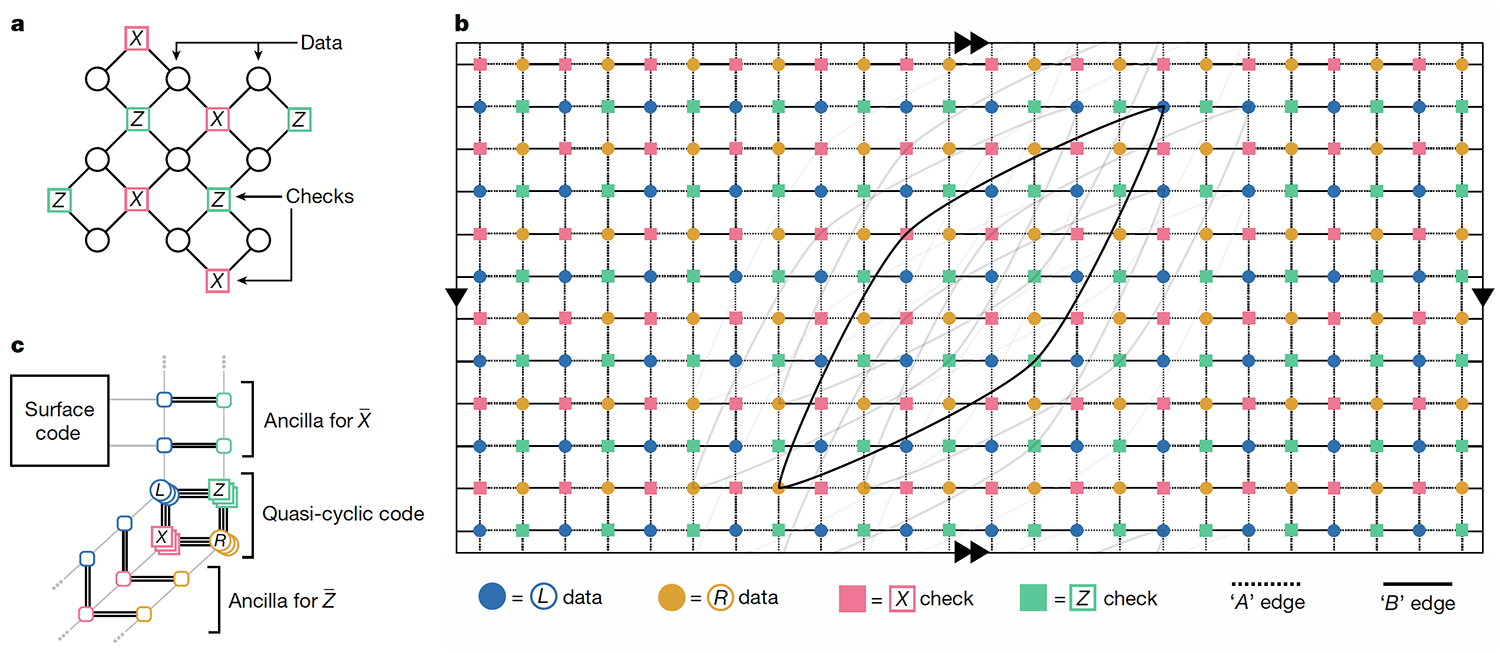Quantum computing is evolving at a rapid pace, with major players like IBM and Google pushing the boundaries to make it a practical reality. Recently, both companies announced significant breakthroughs, with IBM claiming to have achieved quantum error correction—an essential step toward making quantum computers more stable and scalable. This advancement could change the way we approach computing, unlocking solutions to problems that classical computers simply can’t handle.
In this blog, we’ll dive into the importance of these breakthroughs, the role of quantum error correction, how IBM and Google’s progress compares, and what these developments mean for the future
Understanding Quantum Computing: A Quick Overview
Before diving into the latest breakthroughs, let’s start with the basics: What is quantum computing, and why is it such a big deal?
Traditional computers, like the one you’re using right now, process information using classical bits—units that can be either a 0 or a 1. Quantum computers, on the other hand, use qubits. Unlike classical bits, qubits can exist in a superposition, meaning they can be both 0 and 1 simultaneously. Combined with other quantum phenomena like entanglement and interference, this allows quantum computers to tackle complex problems at speeds far beyond the reach of classical systems.
But there’s a catch: qubits are extremely fragile. They’re highly sensitive to external disturbances, such as temperature fluctuations or electromagnetic noise, which can cause errors in calculations. This challenge, known as quantum decoherence, has been one of the biggest obstacles in making quantum computing practical. Enter quantum error correction (QEC), a technique designed to detect and correct errors without disrupting the quantum state. For years, scientists have been working to perfect QEC, and now, IBM’s latest breakthrough suggests they might finally be on the verge of cracking it.
IBM’s Breakthrough in Quantum Error Correction
IBM has made a major breakthrough in quantum error correction, bringing us closer to making quantum computing a practical reality. Quantum computers rely on qubits, which are incredibly fragile and prone to errors due to environmental interference—a problem known as decoherence. Without effective error correction, large-scale quantum computing wouldn't be possible.
Now, IBM has achieved a key milestone by implementing advanced error correction techniques that significantly reduce error rates and extend qubit coherence time. By using logical qubits—combinations of multiple physical qubits—IBM has demonstrated that it can detect and correct errors in real time without losing valuable quantum information.
This is a game-changer for building fault-tolerant quantum computers, which need to perform complex calculations reliably over long periods. IBM’s progress in quantum error correction could be a crucial step toward developing scalable quantum systems that outperform even the most powerful classical supercomputers in real-world applications.
Google’s Continued Push for Quantum Supremacy
While IBM focuses on error correction, Google has been making waves with its efforts to achieve and extend quantum supremacy—the point at which a quantum computer can perform a calculation that is infeasible for classical computers. In 2019, Google made headlines when its Sycamore processor reportedly achieved quantum supremacy by performing a specific task in 200 seconds that would take the world’s fastest supercomputer 10,000 years.
Since then, Google has continued to refine its quantum hardware and algorithms. The company’s latest advancements focus on improving the fidelity and coherence of its qubits, as well as exploring new applications for quantum computing. While Google’s approach differs from IBM’s, both companies are driving the field forward in complementary ways.
Comparing IBM and Google’s Approaches to Quantum Computing
IBM and Google are both working toward making quantum computing practical, but they have slightly different strategies.
IBM is focused on quantum error correction, which is crucial for making quantum systems stable and scalable in the long run. The company believes that fault-tolerant quantum computing is the key to unlocking the full potential of this technology.
On the other hand, Google is prioritizing quantum supremacy—demonstrating how quantum computers can outperform classical ones in specific tasks. While pushing the computational power of quantum processors, Google is also working on error correction.
IBM’s progress in error correction is essential for real-world applications, while Google’s efforts to increase qubit numbers and connectivity are helping to build more powerful quantum processors. In the end, both companies are contributing in complementary ways to the future of quantum computing.
The Impact of These Breakthroughs
IBM and Google’s advancements in quantum computing could have a huge impact on science, technology, and society. Here are some key areas where quantum computing could bring major changes:
1.Cybersecurity and Encryption
One of the biggest concerns—and opportunities—of quantum computing is its ability to break traditional encryption methods. Algorithms like Shor’s could, in theory, crack encryption that protects sensitive data today. But quantum technology also offers a solution: quantum-safe encryption, which could keep information secure in a post-quantum world.
2. Drug Discovery and Materials Science
Quantum computers could completely change how we develop new drugs and materials by simulating molecular interactions with extreme precision. This could speed up the creation of life-saving medicines, more efficient batteries, and innovative materials with unique properties.
3. Artificial Intelligence and Machine Learning
AI could get a major boost from quantum computing. By optimizing complex algorithms and processing massive amounts of data faster, quantum computers could lead to breakthroughs in natural language processing, computer vision, and predictive analytics.
4. Climate Modeling and Energy Efficiency
Quantum computing could help us tackle climate change by making climate models more accurate and optimizing energy systems for better efficiency. This could lead to smarter ways of managing resources and reducing environmental impact.
5. Financial Modeling and Market Predictions
In finance, quantum computing could revolutionize how we analyze markets, optimize investment portfolios, and create new financial strategies. This could reshape the global economy by making financial systems more efficient and predictive.
Challenges and the Road Ahead
Despite major breakthroughs, quantum computing still has significant hurdles to overcome:
- Error Rates: IBM’s progress in quantum error correction is promising, but errors must be reduced even further for large-scale applications.
- Scalability: Quantum computers need millions of logical qubits to reach their full potential, but building them remains a long-term challenge.
- Hardware Limitations: Developing stable, reliable, and cost-effective quantum hardware is still a work in progress.
- Software and Algorithms: While quantum algorithms have shown theoretical promise, more practical applications need to be developed.
IBM, Google, Microsoft, Intel, and various startups are actively working to solve these challenges and push quantum computing forward.
The Road Ahead
IBM and Google's recent breakthroughs mark major steps toward making quantum computing a reality. But there's still a long journey ahead before these computers become part of everyday technology. To get there, collaboration between researchers, industry leaders, and governments will be crucial in tackling the remaining challenges and unlocking quantum computing’s full potential.
For now, these advancements are a strong reminder of how fast technology is evolving. As we stand at the edge of a new era in computing, one thing is certain—the future is quantum.









0 Comments